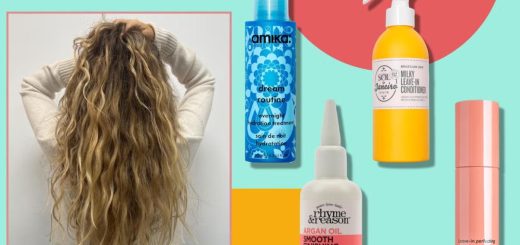The Ultimate Guide to Hair Care: From Shampoo to Conditioning and Beyond
Understanding Your Hair Type
Before diving into hair care routines, it’s essential to understand your hair type. Hair can be categorized based on its texture, porosity, and scalp condition. Identifying these characteristics will help you choose the right products and techniques.
- Texture: Hair texture can be straight, wavy, curly, or coily. Each texture has its own care requirements. For instance, curly and coily hair types often need more moisture compared to straight hair types.
- Porosity: This refers to how well your hair absorbs and retains moisture. Low porosity hair resists moisture, while high porosity hair absorbs it easily but may also lose it quickly.
- Scalp Condition: A healthy scalp is crucial for healthy hair. It can be oily, dry, or balanced.
Choosing the Right Shampoo
Shampooing is the first and crucial step in any hair care routine. It’s important to select a shampoo that suits your hair type and concerns.
- Clarifying Shampoos: These are designed to remove buildup from styling products, but they should not be used too frequently as they can strip the hair of its natural oils. Use them once a week or bi-weekly.
- Moisturizing Shampoos: Ideal for dry or damaged hair, these shampoos contain hydrating ingredients like glycerin and natural oils that help restore moisture.
- Volumizing Shampoos: Perfect for fine or limp hair, these shampoos add body and lift without weighing the hair down.
- Color-Safe Shampoos: For those with color-treated hair, these shampoos are designed to preserve color and prevent fading.
How to Properly Shampoo Your Hair
Shampooing is not just about lathering and rinsing. Proper technique ensures effective cleansing without causing damage.
- Pre-Wash: Brush your hair gently before washing to detangle and distribute natural oils.
- Wet Thoroughly: Use lukewarm water to avoid drying out your scalp. Hot water can strip your hair of essential oils.
- Apply Shampoo: Use a quarter-sized amount and focus on the scalp. Massage gently with your fingertips to avoid stimulating excessive oil production.
- Rinse and Repeat: Rinse thoroughly and, if needed, apply a second small amount of shampoo. This ensures a deeper clean, especially if there’s buildup.
The Art of Conditioning
Conditioning is essential for maintaining hair’s moisture and manageability. The right conditioner can make a significant difference in the health and appearance of your hair.
- Choose the Right Conditioner: Like shampoos, conditioners come in different formulations. Choose a conditioner that matches your hair’s needs—moisturizing for dry hair, volumizing for fine hair, etc.
- Application Technique: Apply conditioner to the mid-lengths and ends of your hair, where it is needed most. Avoid the scalp to prevent excess oiliness.
- Leave-In vs. Rinse-Out: Rinse-out conditioners are used during the shower, while leave-in conditioners are applied after washing and left in the hair. Leave-in conditioners are great for extra moisture and detangling.
- Deep Conditioning: For intense hydration and repair, use a deep conditioning treatment once a week. Apply it generously and leave it on for the time specified on the product label, usually 5-10 minutes.
Additional Hair Care Tips
Beyond shampooing and conditioning, several other practices can enhance your hair care routine.
- Avoid Over-Washing: Washing your hair too frequently can strip it of its natural oils. Aim to wash your hair 2-3 times a week, depending on your hair type and lifestyle.
- Use a Wide-Tooth Comb: After washing, use a wide-tooth comb to detangle your hair gently. This minimizes breakage and split ends.
- Avoid Heat Styling: Excessive use of heat styling tools can damage your hair. If you must use them, always apply a heat protectant spray and keep the temperature at a moderate level.
- Trim Regularly: Regular trims every 6-8 weeks help keep split ends at bay and promote overall hair health.
- Protect Your Hair: If you’re swimming, protect your hair from chlorine by wetting it and applying a leave-in conditioner before diving in. For sun exposure, use hair products with UV protection.
- Healthy Diet and Hydration: Your hair’s health is a reflection of your overall well-being. A balanced diet rich in vitamins and minerals, along with adequate hydration, supports healthy hair growth.
Conclusion
Effective hair care is a multifaceted process that extends beyond just washing and conditioning. By understanding your hair type, selecting the right products, and following proper techniques, you can achieve and maintain beautiful, healthy hair. Incorporate these practices into your routine and adapt them to your hair’s specific needs for the best results. With the right care and attention, your hair can look its best every day.


















